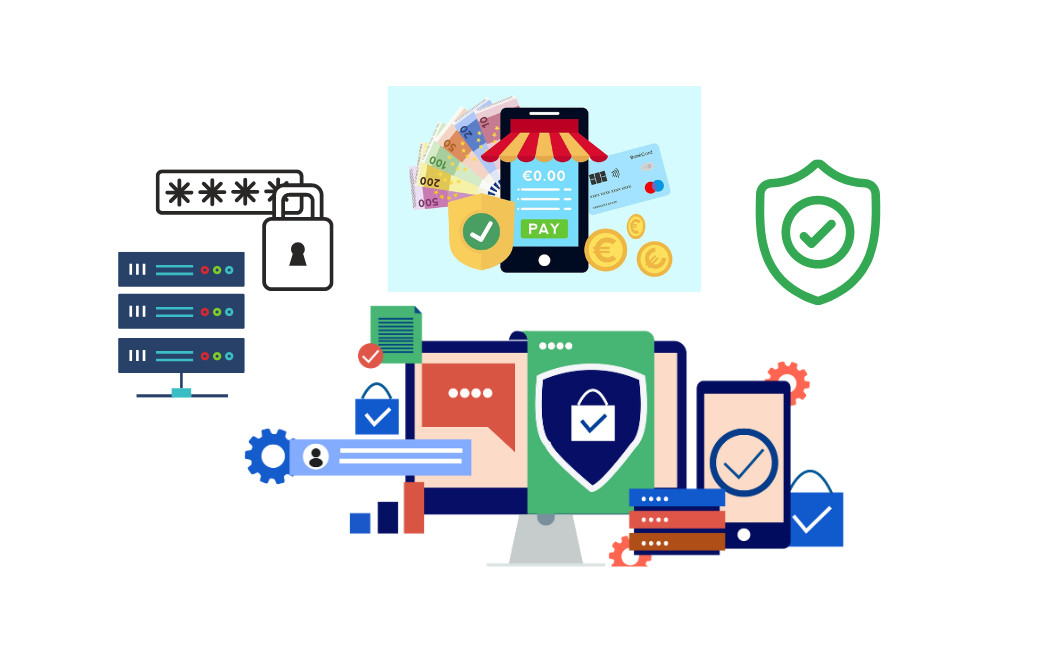In the digital world we live in today, our cellphones have evolved into a central location for a variety of tasks, including the management of our funds. Because we can now access our bank accounts and other financial information on our smartphones, it is essential that we place a high priority on the protection of our banking information. The following is a list of important procedures that you should do in order to protect the information about your financial accounts that are stored on your mobile device:
Use a Robust Password or Personal Identification Number (PIN) You can unlock your phone by configuring a robust and one-of-a-kind password or PIN. You should steer clear of utilizing combinations that are straightforward to figure out, such as birthdates or repeating patterns. Make use of a variety of capital and lowercase letters, digits, and special characters in your expression. Change your PIN or password on a regular basis to keep your information secure.
Enable Biometric Authentication The vast majority of today’s smartphones come equipped with various biometric authentication methods, such as fingerprint recognition and face recognition. Enabling these features will give an additional layer of protection to your system. Because only you have access to your phone and the information stored on it, biometric authentication secures this.
Make Sure That Both The Operating System And The Apps On Your Phone Are Always Up To Date:
Maintaining regular updates for your phone’s operating system as well as its banking applications is essential. These updates often contain security patches and bug fixes that address any vulnerabilities that have been discovered. Enabling automatic updates will guarantee that you receive the most recent safety upgrades available.
Consider Installing trustworthy Antivirus and Security applications on Your Device You should give some thought to installing trustworthy antivirus and security applications on your device. These applications may search for malicious software, identify potentially risky behaviors, and provide extra security features such as anti-theft precautions. Pick an app that comes from a reputable developer, and be sure to keep it updated.
Be Wary of Wi-Fi Connections When you access the information of your bank account on your phone, you should be wary of the Wi-Fi connections you utilize. If possible, steer clear of utilizing public Wi-Fi networks because of the risk of being hacked or having your communications spied on. Instead, make use of a network that is safe and private, such as the Wi-Fi connection in your own house or a dependable mobile data connection.
Enable Two-Factor Authentication (2FA): Whenever it is feasible, enable two-factor authentication for your financial applications. A second verification step, often a one-of-a-kind number delivered to your phone or email, is necessary for two-factor authentication, which provides an additional degree of protection by demanding it. This guarantees that even if someone knows your password, they will not be able to access your account without the second factor, even if they have access to your password.
Phishing Attempts Should Be Avoided, as Should Clicking on questionable Links Be on the lookout for phishing attempts, and steer clear of clicking on any questionable links that are provided to you by email, SMS, or social media. Criminals that commit fraud often use these strategies to deceive people into divulging their banking information. Before submitting any personal or financial information, you should always check the legitimacy of any letters or emails you receive.
Make Sure Your Personal Information Is Safe: Make sure that your personal information is safe on your phone by following these simple steps. It is best to avoid saving sensitive information such as passwords, PINs, or account numbers in notes or in applications that are not secure. Employ a trustworthy password manager so that your login information may be stored and encrypted safely.
examine Your Bank Account Activity On a Regular Basis It is important to regularly examine the activity of your bank account in order to detect any illegal activities. You may obtain up-to-date information on the activities of your accounts by instructing your bank to send you alerts or notifications. Get in touch with your financial institution as soon as possible if you become aware of any potentially fraudulent or unlawful transactions.
Enable Remote Tracking and Wiping: In the event that your phone is misplaced or stolen, it is important to enable the remote tracking and wiping options on your device. This gives you the ability to remotely find and remove the contents of your device, preventing sensitive information such as bank account numbers from getting into the wrong hands. You may activate these protections by going to the settings on your phone or downloading security applications.
You may improve the safety of the information about your bank accounts that are stored on your phone by following these measures. Maintain vigilance, always store your mobile device in a secure location, and check in on your account activities on a frequent basis to guarantee a safe and secure mobile banking experience.
